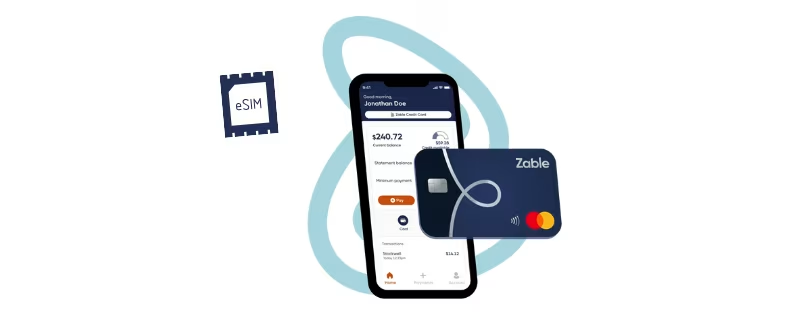
Can eSIMs Really Replace Wi-Fi for Travelers? Not Yet — Here’s Why
If you’ve been scrolling through tech blogs or travel TikToks lately, chances are you’ve heard the hype: eSIM ‘s are the future. They’re fast, flexible, and, let’s be honest, ridiculously convenient. Pop into an app, choose your country, activate, and boom — you’re connected. No more queuing at airport kiosks or fumbling with tiny SIM ejector tools in the back of an Uber. eSIM vs Wi-Fi for travelers
But here’s the thing: for all their futuristic charm, eSIMs aren’t quite ready to kick Wi-Fi to the curb — at least not for travelers. While eSIM technology is rapidly evolving, there are still some key reasons why public and hotel Wi-Fi remain very much part of the travel toolkit.
So, let’s break it down. Cost. Speed. Reliability. And the traveler mindset. We’ll look at where eSIMs win, where Wi-Fi still rules, and when each makes the most sense.
Cost: eSIMs Still Carry a Price Tag
Let’s start with the wallet, because for most travelers, price is still king.
eSIMs are more affordable than ever, especially with all the new players in the game — Airalo, Nomad, aloSIM, Airhub, GigSky, and countless others. For a few bucks, you can get a gig of data that’ll last you a couple of days, depending on usage.
But when you compare that to free Wi-Fi at your hotel, the coffee shop downstairs, the train station, and even some airplanes — well, it’s clear why many travelers still default to Wi-Fi. Zero cost beats low cost.
Let’s say you’re on a two-week trip hopping across Europe. Even using the most budget-friendly eSIM deals, you’re probably going to spend anywhere from €25–€60 on data if you’re streaming, navigating, working remotely, or using translation apps regularly.
Now compare that to a hotel that offers solid Wi-Fi throughout your stay. It might be a bit slower or spottier, sure. But it’s “free.” And for travelers who aren’t constantly on the move — like digital nomads parked in Airbnbs or business travelers sticking to one city — that makes a difference.
So while eSIMs are becoming more cost-efficient, they haven’t dethroned the appeal of free, unlimited hotel Wi-Fi. At least not yet.
Speed: Not Always What You Expect
One of the most common assumptions about mobile data is that it’s faster than Wi-Fi. And to be fair, sometimes it is. Especially when you’re stuck at a hotel with dozens of guests streaming Netflix and uploading GoPro videos to Google Drive.
But mobile networks — even 5G ones — aren’t flawless either.
Let’s talk speed realistically. A high-quality eSIM data connection in a major city like Tokyo, Berlin, or New York might give you download speeds of 50–150 Mbps. Great, right? But that depends on network congestion, your phone’s band compatibility, and the specific carrier your eSIM connects to (which you often don’t get to choose).
Meanwhile, many hotels are stepping up their Wi-Fi game. Especially in business-class accommodations, speeds of 100 Mbps or more are increasingly common. Even budget hotels and co-working spaces now invest in fiber-optic connections to stay competitive.
Plus, public Wi-Fi — though notoriously unreliable in the past — is getting smarter. Some airports, cafés, and entire cities (looking at you, Seoul and Singapore) offer surprisingly fast, stable, and secure connections.
Bottom line? Speed can be a toss-up. eSIMs can be faster than Wi-Fi, but they’re not always. And when both are good enough for browsing, streaming, and calling home — most people will still go for the free option.
Reliability: eSIMs Win in Transit, Wi-Fi Wins in One Spot
This is where eSIMs really shine.
The moment you leave the comfort of your hotel or café, public Wi-Fi becomes a scavenger hunt. Will the next café have a password? Will the airport Wi-Fi cut off after 30 minutes? Will you need to enter your passport number into a shady-looking portal?
With an eSIM, none of that matters. You’re connected everywhere — walking through the streets of Bangkok, catching a train through Italy, or even lounging at the beach in Mexico. For navigation, translation, rideshare apps, and real-time updates, eSIMs are a godsend.
But — and this is important — if you’re not constantly on the move, Wi-Fi still offers more stability.
Here’s a scenario: you’re working remotely from a villa in Bali or a co-living space in Lisbon. You’re on video calls, uploading large files, maybe even hosting webinars. In these cases, a strong Wi-Fi connection is simply more reliable, and importantly, more sustainable for heavy data usage.
Relying solely on a mobile connection for that kind of workload? Risky — unless you have an unlimited data plan (rare for eSIMs), excellent 5G coverage, and a battery pack at the ready.
Traveler Behavior: Habits Die Hard
Tech aside, a lot of the reason Wi-Fi hasn’t disappeared comes down to traveler psychology.
We’ve been trained for decades to seek out Wi-Fi. It’s second nature. Land in a new country? First thing we do is ask the Airbnb host or scan for networks at the airport. Even travel blogs still include “Does this place have good Wi-Fi?” in their reviews.
Plus, many travelers — especially those not super tech-savvy — aren’t yet comfortable setting up eSIMs. Sure, the apps make it fairly easy, but it’s still an extra step: scanning QR codes, switching data plans, managing coverage zones. If anything goes wrong, there’s no physical SIM to fall back on. That uncertainty keeps some travelers clinging to Wi-Fi like a safety blanket.
And let’s not forget the data-conscious crew — the folks who still turn off mobile data and rely on Wi-Fi to upload photos, message friends, or plan their next day’s itinerary. Old habits die hard.
So, Can eSIMs Replace Wi-Fi? Not Yet — But They’re Getting Closer
Here’s the real talk: eSIMs are complementary, not a total replacement — yet.
They’re unbeatable for mobility, emergency connectivity, and day-to-day roaming. In fact, for short-term tourists or business travelers hopping between countries, eSIMs are often essential. You can’t count on free Wi-Fi when you’re navigating a city you’ve never been to or calling an Uber in the rain.
But when you’re settled in one place, doing data-heavy work or trying to save money? Wi-Fi still makes more sense.
For now, the smartest travelers use both. A cheap eSIM for consistent mobile coverage, and local Wi-Fi for anything heavy or extended.
Final Thought about eSIM vs Wi-Fi for travelers
eSIMs might not have replaced Wi-Fi for travelers — yet — but they’ve changed the game. Think of them like portable insurance for staying connected. You don’t always need them, but when you do, you’re glad they’re there. eSIM vs Wi-Fi for travelers
So don’t ditch your Wi-Fi just yet. But don’t leave home without an eSIM either.
Travel smarter. Combine both. And stay connected wherever the road (or Wi-Fi signal) takes you.









